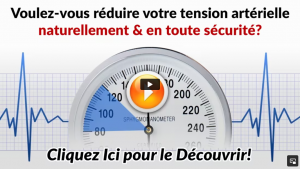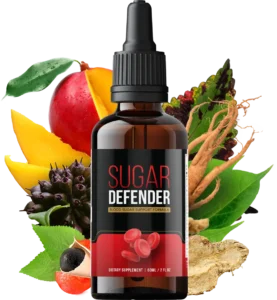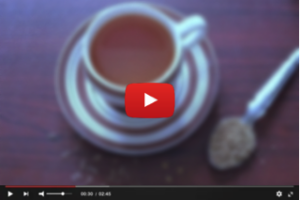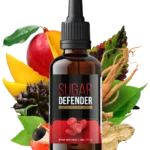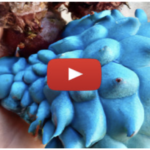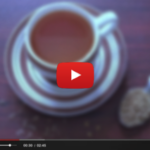The #1 Rated Blood Sugar Formula
Living with Hypertensive Atherosclerotic Cardiovascular Disease: Tips for Managing Your Health

Understanding Hypertensive Atherosclerotic Cardiovascular Disease (HACD)
Imagine your heart as a bustling city, with arteries acting as its highways. Now, picture these highways getting clogged due to high blood pressure—this is what happens in HACD. Let’s break it down.What is HACD?
Hypertensive atherosclerotic cardiovascular disease (HACD) is like a silent storm hitting your heart's arteries. High blood pressure acts as a relentless force, damaging the artery walls over time. This damage leads to plaque buildup—a process called atherosclerosis—which narrows and hardens these vital pathways. The result? Reduced blood flow to your heart, heightening the risk of heart attacks or other cardiovascular events.
Causes and Risk Factors
The main culprit here is uncontrolled high blood pressure. Think of it as a persistent battering on your artery walls. Other accomplices include diets rich in saturated fats and sodium, a sedentary lifestyle, smoking, obesity, and genetics. If heart disease runs in your family, you’re more susceptible.
Symptoms and Diagnosis
HACD often flies under the radar until significant artery blockage occurs. Symptoms may include chest pain during physical activity, shortness of breath, dizziness, or fatigue. Diagnosing it involves monitoring blood pressure, imaging tests like echocardiograms, and stress tests to assess heart function.
Embracing Lifestyle Changes
Managing HACD is a journey that starts with lifestyle tweaks. Here’s how:
Nutrition: Your Heart's Best Friend
Diet plays a starring role. Focus on fruits, vegetables, whole grains, lean proteins, and healthy fats. The DASH diet is your ally here—it emphasizes reducing sodium while boosting potassium, magnesium, and calcium intake.
Sodium Savvy
Excessive salt isn’t just bad for taste; it’s a silent blood pressure booster. Cut back on processed foods and opt for herbs or lemon to spice up meals without extra salt.
Moving Matters
Regular exercise is your heart’s workout buddy. Aim for 150 minutes of moderate aerobic activity weekly—walking, swimming, cycling are great choices. Always consult your healthcare provider before starting a new routine.
Medical Management: Your Treatment Toolkit
Medication as a Friend
Your doctor might prescribe ACE inhibitors, ARBs, or calcium channel blockers to lower blood pressure and ease heart workload.
Regular Check-Ins: Essential for Success
Consistent follow-ups ensure your treatment plan stays effective and any complications are caught early.
Adherence: The Golden Rule
Strictly following prescribed medications and lifestyle changes is crucial. Skipping doses or ignoring advice can worsen symptoms and increase heart disease risk.
Dietary Wisdom for HACD Warriors
Fiber and Nutrients: Power Couples Against Cholesterol
Load up on beans, lentils, and whole grains to lower cholesterol. A colorful variety of fruits and veggies ensures ample vitamins and minerals.
Beware the Fats
Limit red meat and full-fat dairy; instead, choose avocados, nuts, seeds, and olive oil for healthier fats.
Alcohol: Know Your Limits
If you drink, moderation is key. Excessive consumption can hike blood pressure and harm your heart.
Exercise Tips: Staying Active Safely
Suitable Workouts for Heart Health
Opt for low-impact exercises like walking or swimming—gentle on the heart, big on benefits.
Consistency: The Key to Cardiovascular Fitness
Regular exercise boosts circulation and strengthens your heart. Even small daily efforts make a difference.
Building Your Exercise Routine
Start slow and gradually increase activity. Set achievable goals to stay consistent without overexertion.
Navigating the Emotional Terrain of HACD
Stress Management: Essential for Well-being
Stress can worsen heart conditions. Try meditation, deep breathing, or yoga to keep stress at bay.
Building a Support Network
Connect with friends, family, or support groups. Sharing experiences and encouragement can boost motivation and positivity.
Mental Well-being: Prioritizing Your Mind
Engage in hobbies that bring joy and relaxation. Self-care balances managing HACD with living a fulfilling life.
Monitoring Progress: Staying Ahead of Complications
Scheduled Check-Ups: Keeping Tabs on Health
Regular appointments with your healthcare provider ensure you’re on the right track. Tests like blood pressure checks and cholesterol screenings are vital.
Tracking Symptoms: A Journal for Your Journey
Maintain a journal of symptoms or blood pressure changes to help adjust treatment plans as needed.
Red Flags: Recognizing Potential Complications
Beware signs like severe chest pain, sudden dizziness, or shortness of breath. These could signal serious complications requiring immediate medical attention.
Conclusion
Managing HACD is a proactive journey that combines lifestyle changes, medical advice, and emotional resilience. By staying consistent, seeking support from healthcare providers and loved ones, you can navigate this journey successfully and enhance your quality of life. Remember, every small step counts—a healthier heart is within reach!

Maja Kowalczyk is a health enthusiast and has been interested in healthy and natural methods of regulating blood pressure for many years.




